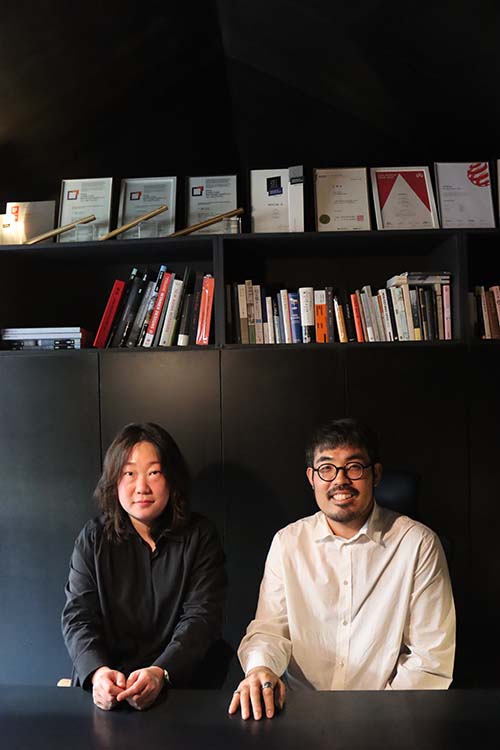SPACE March 2023 (No. 663)
ʻI am an Architectʼ was planned to meet young architects who seek their own architecture in a variety of materials and methods. What do they like, explore, and worry about? SPACE is going to discover individual characteristics of them rather than group them into a single category. The relay interview continues when the architect who participated in the conversation calls another architect in the next turn.
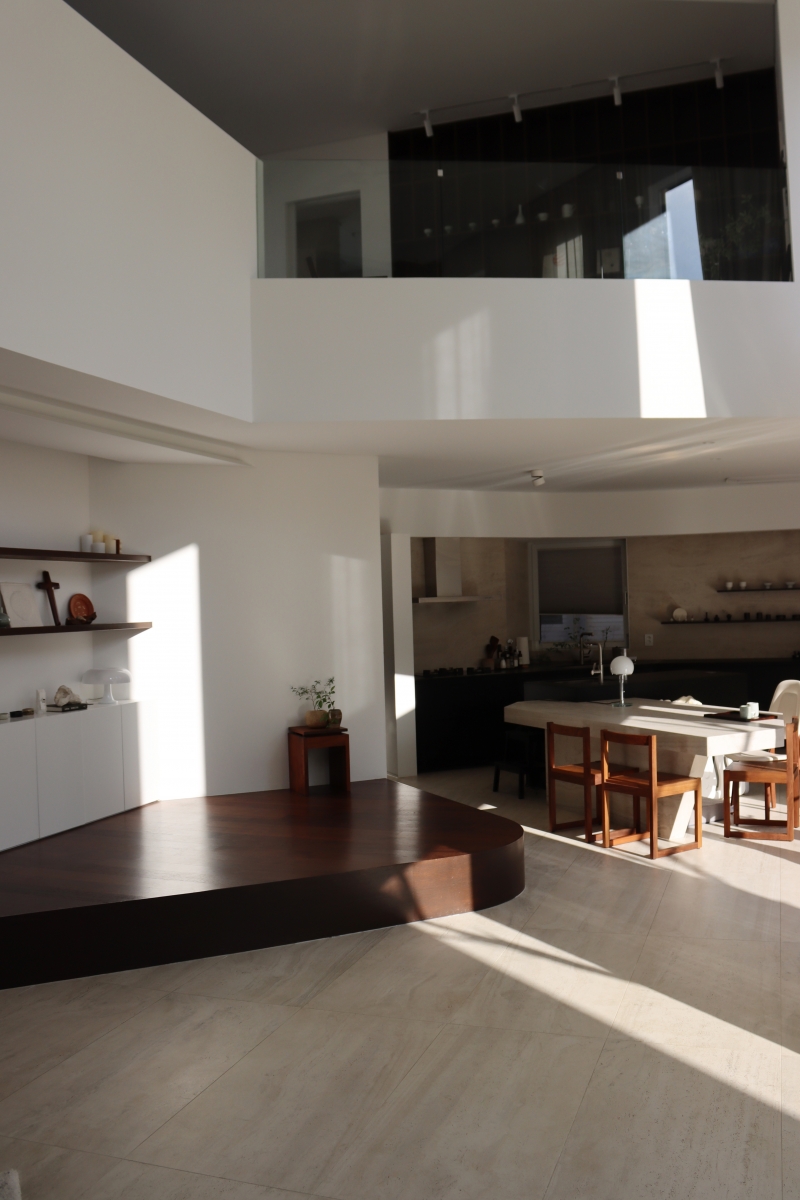
Interior view of VILLA C
interview Lee Byungyeob principal, BYARCHITECTURE × Youn Yaelim
Even If You Are Walking Through a Fog
Youn Yaelim (Youn): Tell us about the beginnings of BYARCHITECTURE. You previously opened B.U.S Architects with your fellow college alumni, Park Jihyeon and Cho Seonghak.
Lee Byungyeob (Lee): The three of us were best friends in college. After graduation, we opened an office because of a project we worked on together. We ran the office together for about two years, and then I developed an offshoot as BYARCHITECTURE.
Youn: Youʼve started two different practices at a very early age.
Lee: I was daring! I realised that working at an architectural firm wasnʼt quenching my thirst. In most offices, they work by executing the plans they are given, and their job is done when the building is finished. I was interested in not only the physical construction but being ully involved in its planning and running.
Youn: Architects are sometimes involved in the early planning stages of a building, but thatʼs not an everyday opportunity.
Lee: Thatʼs right. On the one hand, I want to create architectural work while also enjoying it for the foreseeable future, but I decided it would not be easy to do so in the current architectural firm ecosystem. I wanted to build a separate business model based on articulations of space and to go deeper into client-based architecture. To do that, I thought, ʻIʼll build my own ecosystem.ʼ So rather than go along with a system thatʼs already been constructed, I tried to plan things out for myself that I would enjoy working on, even if it was dim and foggy and flooded with trial and error.
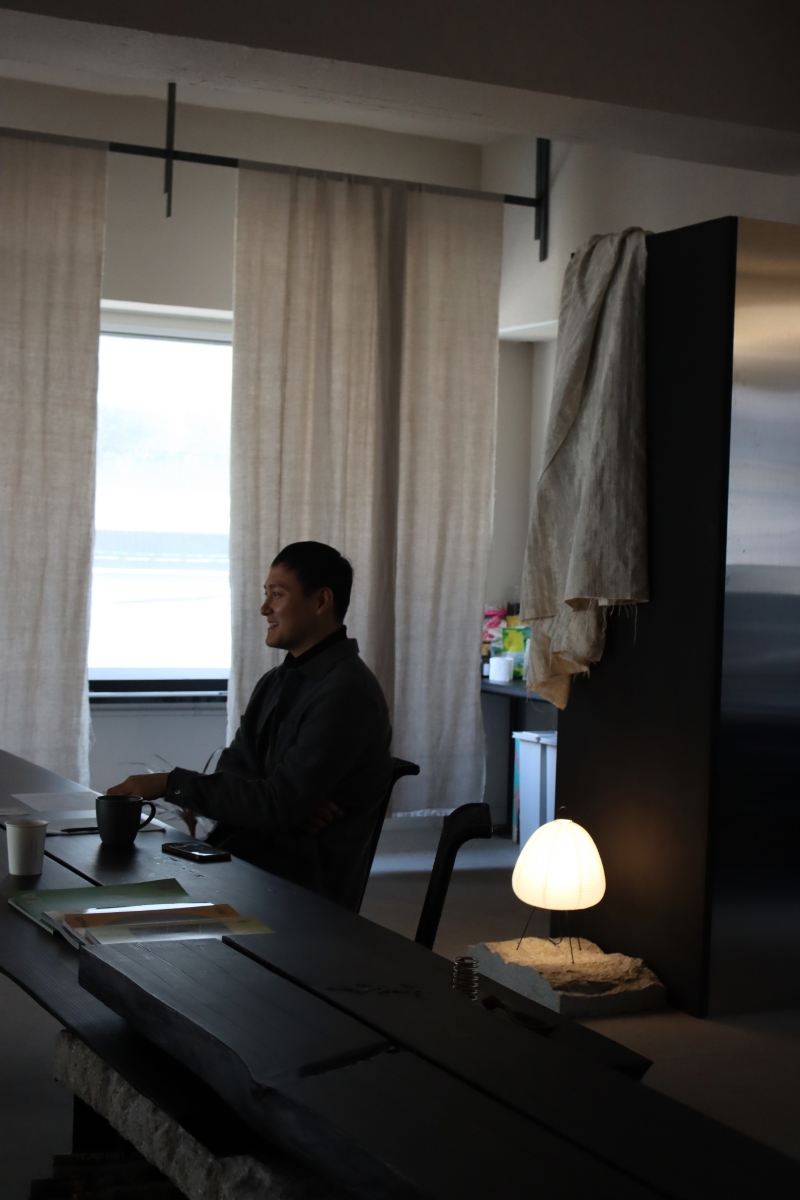
Office of BYARCHITECTURE
Join the Journey
Youn: Seoul Vacation (2017), your first project as BYARCHITECTURE, is a testament to that determination. Itʼs a project into which you put a lot of effort at the planning and running stages.
Lee: When designing suitable spaces for others while wondering whether the space I was living in was good enough, Seoul Vacation gave me a clue. It was a project that transformed a two-storey western-style house into a home and place for vacation stays, giving my family and me a home with a yard in the heart of Seoul and travellers some quality time as if they were spending the vacation visiting grandma.
Youn: Itʼs been a while since you worked on this project, but I think it still means something to you.
Lee: It left a deep mark. I think itʼs a big difference whether you have experience creating space for yourself in design. Since working on Seoul Vacation, Iʼve been thinking a lot about whatʼs important in a home and why in essential beyond the functional reasons. Before that, I was thinking about how my ideas and personality as an architect could be expressed through a house, and that changed a lot.
Youn: You also ran Chwihyang Gwan (2018) based on your experience with Seoul Vacation.
Lee: In so far as I had improved my living conditions through Seoul Vacation, my attention then shifted to improving the quality of my leisure time. I became quite enlightened about the nature of home while conducting several workshops on the home at Chwihyang Gwan.
Youn: I heard you recently organised a new workshop based on the concept of the house―is it similar?
Lee: The current workshops are with clients, so the methodology is different but the primary purpose is the same. It is pairing up and designing each otherʼs home. Initially, I planned to design their own houses, but when I realised this wouldnʼt work, I changed the course since five out of ten were drawing apartment flats.
Youn: They can be free only when they think about designing someone elseʼs house. Are two complete strangers paired up?
Lee: Right. So, itʼs natural for them to talk about their lives and their dream homes separate from practical issues like features and money. So more creative results emerge than you might think. Some people draw houses on the ocean. Even if it seems ridiculous, it says a lot about what they value and choose to do.
Youn: It reminds me of the houses I used to draw in my sketchbooks when I was young. Donʼt workshops with real clients need to be more realistic?
Lee: You need to ask more profound questions. For example, what kind of house would you like to live in?
Youn: I would love to have a green forest next to my house and... wait a minute. I need time to think!
Lee: Many of my clients said the same (laugh), and many people find it hard to talk about their preferences. I try to bring out something in them that doesnʼt come out of their mouth in fully formed sentences but is located deep within them. The image will naturally come up when you create a connection with a higher value, a story surrounding the home.
Youn: How can you draw something out they donʼt yet even recognise?
Lee: I recently worked with a branding expert to create an in-depth questionnaire that took about six months of research. Itʼs a tool of sorts. I look at the words in the questionnaire as if under a microscope. One may not have realised it, but you can find keywords essential to oneʼs life. In the process, they get to know themselves, and we get to see them in those moments, and weʼre one step closer to creating a home that looks like them.
Youn: Now that youʼve explained it, the phrase you used to describe the workshop as ‘a home as a journey of self-discoveryʼ makes more sense.
Lee: I dream that there will be more people who can talk clearly and entertainingly about the home they want, even if they currently live in a villa or apartment. I want a world where everyone has their own colour in their home.
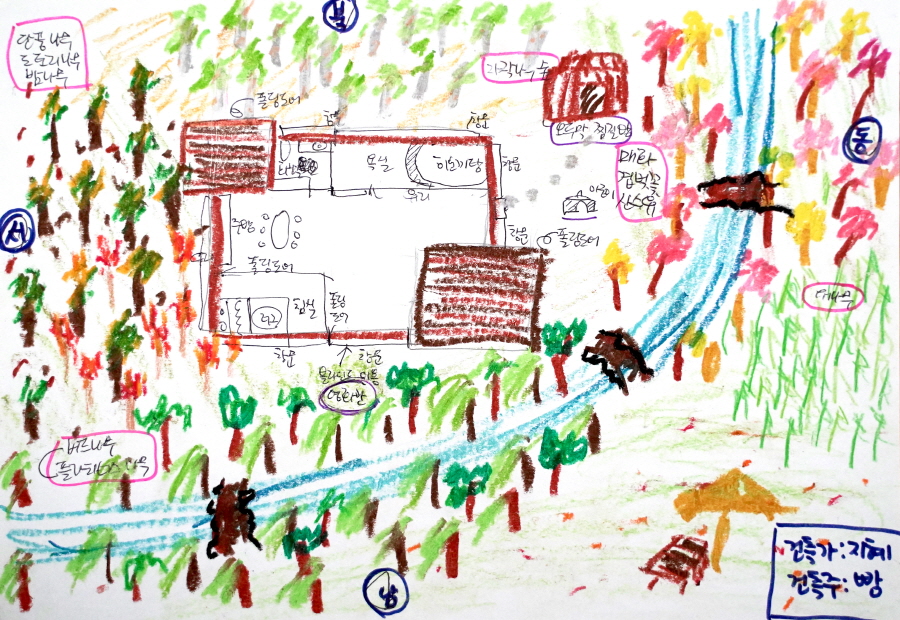
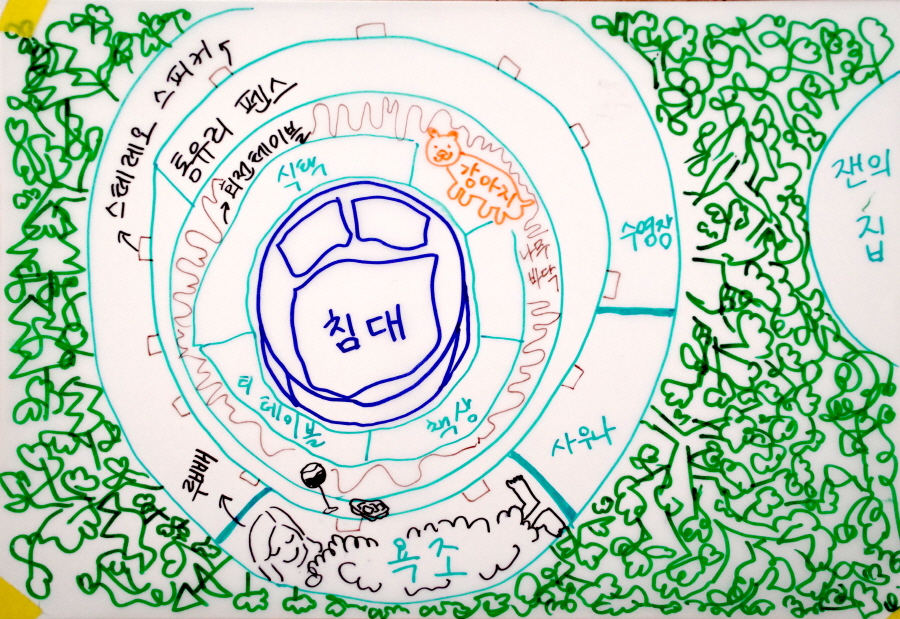
Drawings from workshops at Chwihyan Gwan
Not Making Boundaries
Youn: I heard you like modern dance.
Lee: Iʼve loved modern dance since my 20s, so I joined a dance company and worked as a non-professional dancer for a few years. After seeing myself dancing on video, I realised I wasnʼt very good at it, so I kind of stepped back into planning and stage design. (laugh)
Youn: Your cross-disciplinary background has surprised me. You travelled to the UK for a show you participated in and created a smartphone app for everyday use.
Lee: Itʼs one of my few strengths. I donʼt place bureaucratic frameworks or restrictions on my thinking. The medium through which I express myself or implement my ideas has been space, software, workshops, and movies, but Iʼve never really thought about boundaries between activities.
Youn: Are you making movies?
Lee: Sometimes. I have my own ideas about documenting architecture. Strangely, Iʼm not interested in fancy videos where space is the star of the show. I think itʼs more natural for the space to be the backdrop for a music video or movie. Iʼve shot short films about stories set in the house Iʼve worked on, and Iʼve tried making a contemporary dance film at Heun Coffeebar (2019). If I had the time and money, Iʼd shoot a movie or art film like this for every project.
Free-Flowing Towards Your Dreams
Youn: I hear you like to take a bath.
Lee: One of the most essential things in my personal routine is bathing. I make sure to take a bath at least once or twice a week. Sometimes I go every day.
Youn: Why are you so obsessed with bath time?
Lee: The moment I enter the water, everything comes to a halt. I feel like thatʼs the only time Iʼm free.
Youn: Are you going to a public bathhouse?
Lee: Yeah, I have two favourite places. But the truth is, public baths leave a lot to be desired. I want to be visually and aurally free, but I canʼt. However, that doesnʼt make a hotel spa an alternative. Itʼs been a while since Iʼve dreamed of having a place near my daily routine where I could focus on my bath for an hour or two in peace. So, this year, Iʼm preparing a bath brand in a lighter form.
Youn: Iʼm looking forward to it. I often take baths at home, but my tub is small, and I have to bend my legs. And I wouldnʼt go to a public bathhouse.
Lee: Thatʼs precisely the point. Most of us live in homes with a tiny or no bathtub. But thereʼs something about a bathhouse that you canʼt get at home. The bathhouse Iʼm designing is a private space, much smaller in scale than a public bath. A place to relax in nature while still being in the city. Iʼm taking it in a direction Iʼve always dreamed of. I used to hear so much about putting yourself in the userʼs shoes, but I think times have changed. I believe in creating something you personally thirst for, and even if you only find a few other people who can connect to it, it can form the basis of a powerful new initiative.
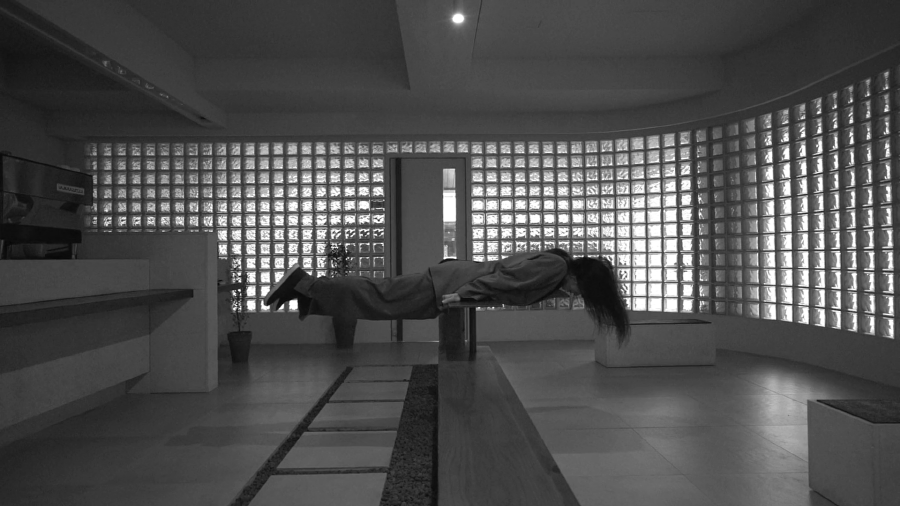
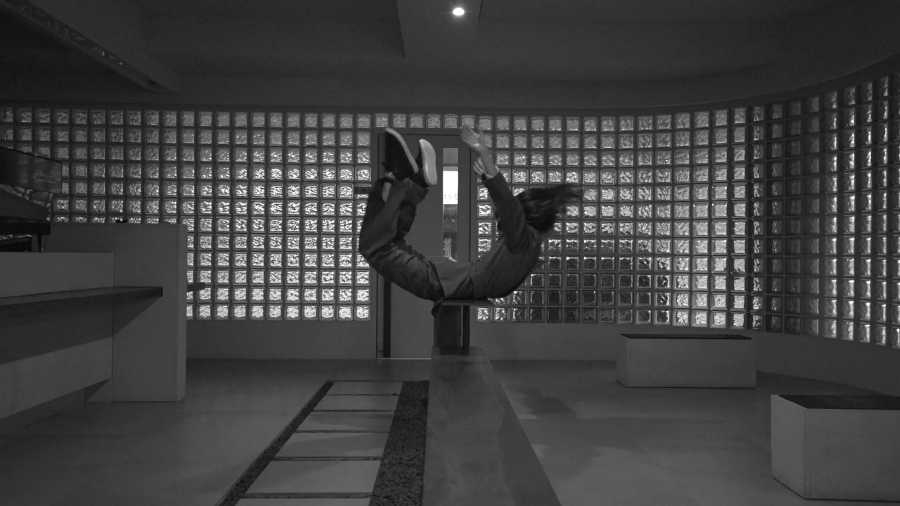
Still images of a clean well lighted place (2019), contemporary dance film at Heun Coffeebar
Witnessing Each Otherʼs Growth
Youn: You built several houses in Cheongna, right? Youʼve travelled this road so many times.
Lee: I worked on about six houses in the Cheongna housing estate, Incheon. I go to supervision too many to be counted. I go there a lot, especially when Iʼm doing finishing touches because thatʼs when it has a degree of perfection. Here we are, at VILLA C (2021).
Youn: The houses look pretty tightly packed.
Lee: Itʼs a town where itʼs hard to create a private yard. Privacy is something very natural in our homes. Iʼm figuring out how to be open while still remaining private. Depending on the angle, the VILLA C fence can appear perfectly solid, or you can see through it. But if you look at it from next door, itʼs a wall.
Youn: Your perspective on houses has changed over the years through experiences with different clients.
Lee: In the early days of the company, I was all about the sensory, and now I focus on making the affective layers dense and detailed. Rather than putting my colours on the client, I like to think of it as creating chemistry with each other. For many young architects, the house programme is seen as the cornerstone work to proceed to the next level, and Iʼve been working on houses exclusively since about three years ago. It freed me from the need to showcase my architectural vocabulary in houses.
Youn: Why did you choose to focus on houses?
Lee: In the past, I wanted to do something with scale. But it wasnʼt fun, because that kind of architecture is all about capital. That said, itʼs more straightforward. It needs to maximise its surface area and profit margins. But thatʼs not what a house is about, so I like it. Iʼd rather see people live and watch them grow than be satisfied by scale.
Youn: Itʼs heart-warming to see them grow.
Lee: On the flip side, Iʼve gotten a lot from them. In a society where individuals are themselves becoming brands, perhaps the home is the vast structure able to best tell a personʼs story. Building a house is the most complete reflection of who you are. However, clients donʼt come to you with that intention. Watching our clients build their identities by sharing aspects of their daily lives on social media after their homes were made and seeing how they inspired others to dream of their own homes, convinced me. It convinced me that building a house is a journey of self-discovery.
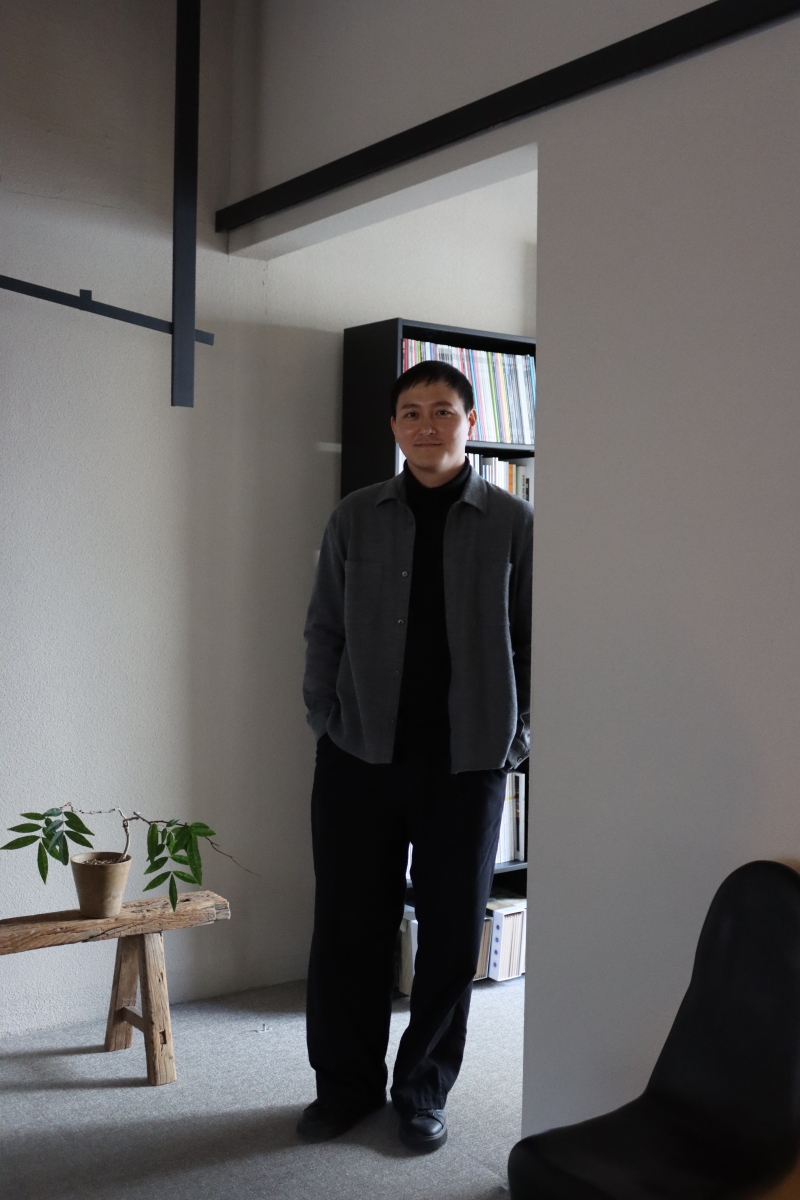
Lee Byungyeob, our interviewee, wants to be shared some stories from So Hancheol, Lee Agos Donguk, Lee Jihyun (co-principals, A-Axis Architects) in April 2023 issue.





